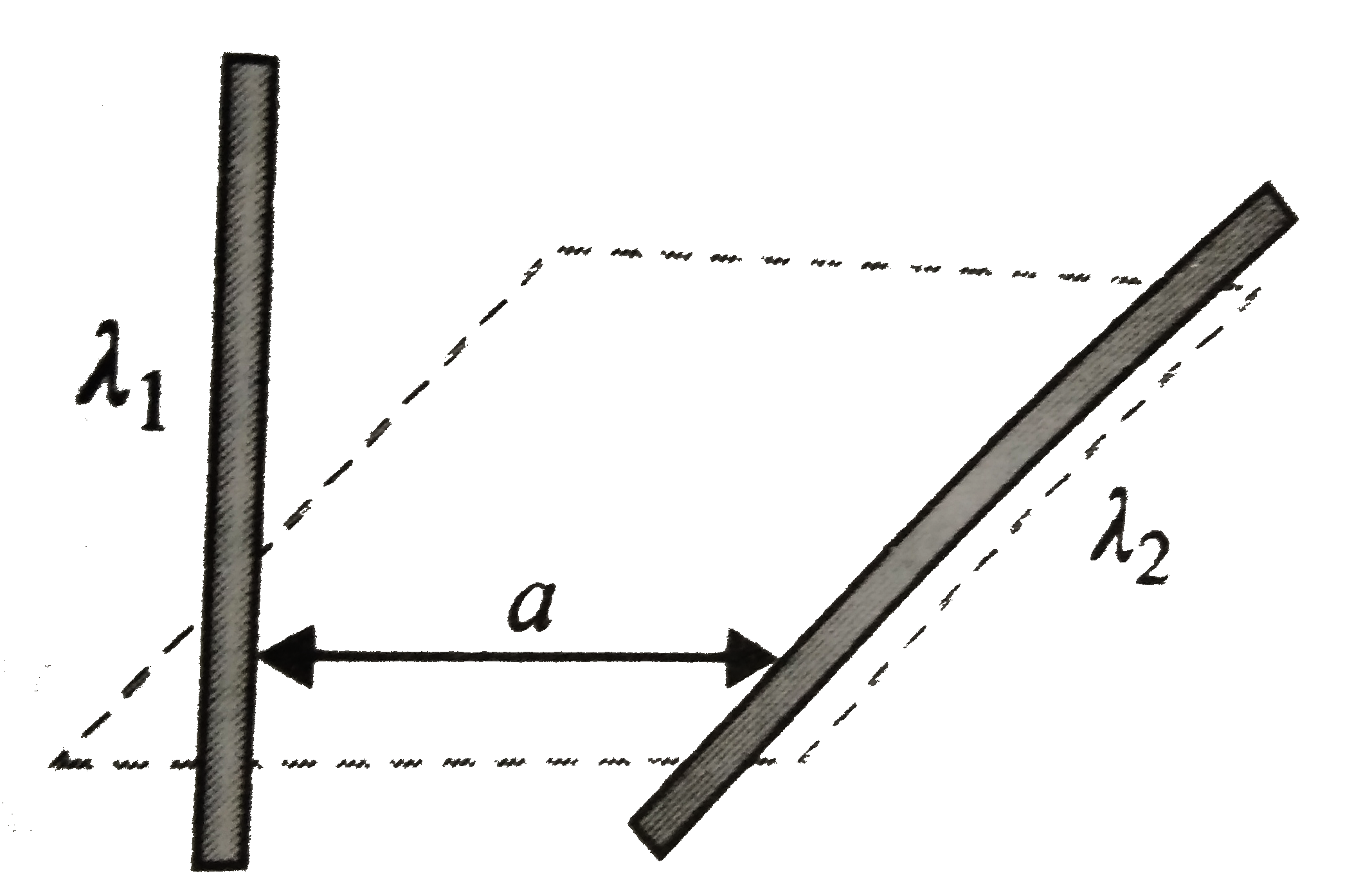Charge over a nonconducting ring is distributed so that the linear charge density varies as λ=λ0sinθ. What is the direction of force on a charge q0 placed at the center?

along 1 if q0 is positive and 2 if q0 is negative.
along 2 if q0 is positive and 1 if q0 is negative.
along 3 if q0 is positive and 4 if q0 is negative.
along 4 if q0 is positive and 3 if q0 is negative.
The correct Answer is:B
For θ≤θ<2π,λ is negative and symmmetrically distributed about y−axix.
Hence direction of electric Beld Ene at O due to charge distribution is in downward direction, If q0 is

Topper's Solved these Questions
- MISCELLANEOUS VOLUME 3BOOK - CENGAGE PHYSICSCHAPTER - MISCELLANEOUS VOLUME 3EXERCISE - Multiple Correct Answer type
109 Videos
- MISCELLANEOUS VOLUME 3BOOK - CENGAGE PHYSICSCHAPTER - MISCELLANEOUS VOLUME 3EXERCISE - Assertion and Reason Type
8 Videos
- MECHANICAL PROPERTIES OF SOLIDSBOOK - CENGAGE PHYSICSCHAPTER - MECHANICAL PROPERTIES OF SOLIDSEXERCISE - Question Bank
4 Videos
- MISCELLANEOUS VOLUME 5BOOK - CENGAGE PHYSICSCHAPTER - MISCELLANEOUS VOLUME 5EXERCISE - Integer
12 Videos
Similar Questions
Knowledge Check
The dimensional formula of linear charge density λ is
A[M−1L−1T+1A]B[M0L−1T+1A]C[M−1L−1T+1A−1]D[M0L−1T+1A−1]A thin non-conducting ring of radius R has a linear charge density λ=λ0cosθ, where θ is measured as shown. The total electric dipole moment of the charge distribution is
 AR2λ0B2πR2λ0CπR2λ02DπR2λ0
AR2λ0B2πR2λ0CπR2λ02DπR2λ0A half ring of radius R has a charge of λ per unit length. The electric force on 1C charged placed at the center is
AzeroBkλRC2kλRD(kπλ)R
Two mutually perpendicular long straight conductors carrying uniformly distributed charges of linear charges densities λ1 and λ2 are positon at a distance a from each other. How does the interaction between the rods depends on a ?

View SolutionA thin non-conducting ring or radius a has a linear charge density λ=λ0sinϕ. A uniform electric field E0ˆi+E0ˆj exist in the region . .Net torque acting on ring is given as :

View SolutionA non conducting ring of radius R1 is charged such that the linear charge density is λ1cos2θ where θ is the polar angle. If the radius is increased to R2 keeping the charge constant, the linear charge density is changed to λ2cos2θ. The relation connecting R1, R2λ1 and λ2 will be
View SolutionIf linear charge density of a wire as shown in the figure is λ

View SolutionA half ring of radius r has a linear charge density λ.The potential at the centre of the half ring is
View Solution
